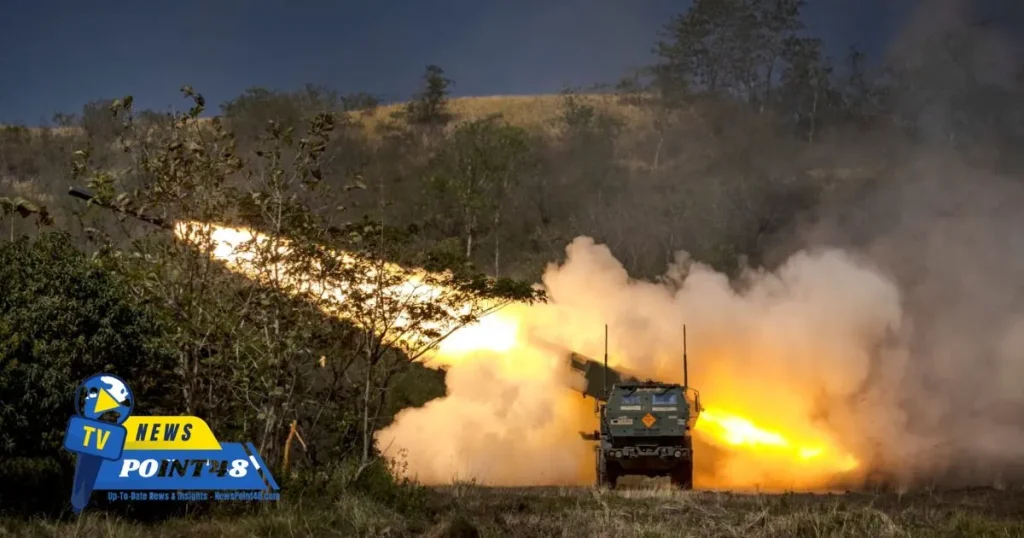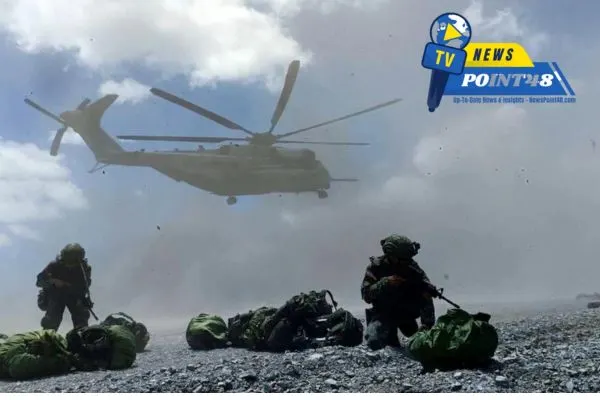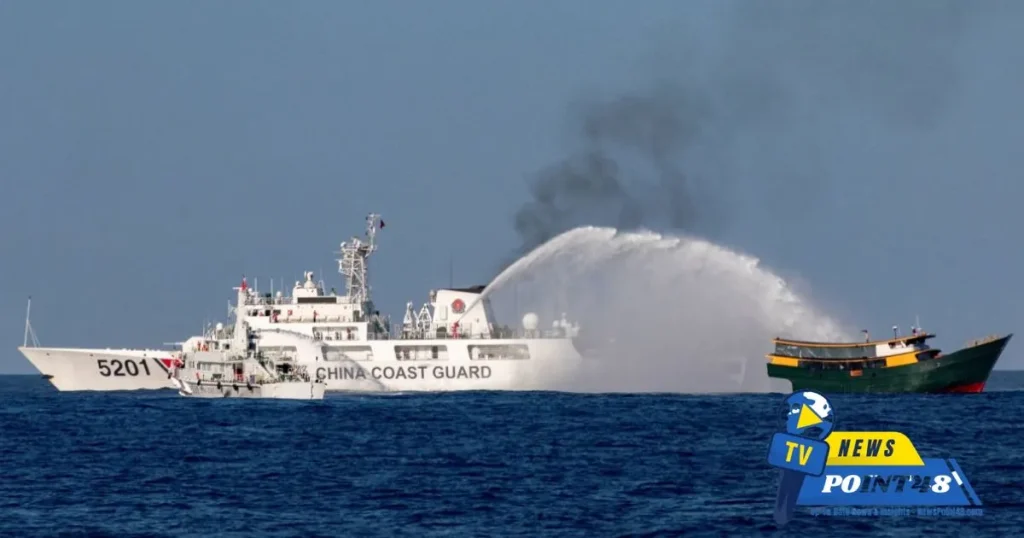
Gamma Insights Views on GeopoliticalTensions Going Forward
The U.S. military has made a large strategic decision to maintain the missile defense system in the Philippines, this happens as tensions between the United States and China continue to rise in the Indo-Pacific region. The action is the latest in a region already under siege by more aggressive posturing by both countries vying for supremacy over the South China Sea. The U.S. is likewise undertaking tests for delivery of the missile system during the war, creating new stakes in this ongoing competition. This blog on newspoint48 is SEO-optimized news that will discuss the geopolitical consequences of this decision, its U.S.-China dimensions, and the reaction from the Philippines as well as other regional players.
Philippines as a Geopolitical pawn
The Philippines is one of Washington’s most important strategic allies in the Asia-Pacific, providing a vital location near the South China Sea, where billions of dollars worth of goods flow through each year. For years China has laid claim to much of the South China Sea, which is loaded with natural resources, and through which roughly $5 trillion of global trade flows annually.
U.S. military forces in the Philippines, and the deployment of missile defense systems, are a manifestation of this deterrence message. The U.S. beefed up its military presence in part to counterbalance China’s expanding influence and military buildup.
The move mirrors a broader Indo-Pacific strategy for Washington aimed at ensuring freedom of navigation and maintaining the national balance there. American forces will be allowed to rotate through Filipino military bases under a deal called the Enhanced Defense Cooperation Agreement (EDCA), as part of efforts to boost military cooperation between the traditional allies.
US-China tensions are boiling over

The United States and China are struggling to settle their differences on multiple fronts including trade, technology, and human rights. But still is one of the most disputed points of conflict in the South China Sea. The allegations come just hours after Chinese forces reportedly test-fired 10 ballistic missiles into the South China Sea, where China has built artificial islands and established military installations to leverage its claims over much of the territory there as a base for projections of naval power.
In turn, the U.S. has performed freedom of navigation operations (FONOPs), sailing warships through waters that China claims to stand by international passage rights. The deployment of missile systems in the Philippines is part of a larger U.S. build-up in the Asia Pacific, designed to counter Beijing’s belligerence.
In addition, the missile defense system is viewed as a counter to China’s fast-developing military. Beijing has built up sophisticated missile capabilities, including hypersonic weapons that can potentially overcome U.S. defenses, to threaten what the Pentagon calls a growing number of American military target assets in the region.
Test Of War Time Deployment: Ready For A War/conflict
The U.S. military is not only keeping missile systems in the Philippines but also training for wartime deployment using them. These tests include a simulation of potential conflict scenarios such as how the missile defense system can be deployed and how likely it is to intercept enemy missiles.
The U.S. also conducted these tests in a show of readiness should the situation escalate with China. They prepare this military readiness knowing very well, the teetering nature of the Indo-Pacific geopolitical landscape. But they also risk further stoking tensions with China, who are likely to view such actions as an insult.
The Philippine Response: Walking That Tightrope

Their balancing act, of course, involves sustaining a complicated relationship with the U.S., as well as China. The Philippines, on the other hand, is the possessor of a tie-up with the US army that eases its military and economic aid. In contrast, China is among the Philippines’ largest trading partners and has made substantial investments in infrastructure in the country.
President Ferdinand Marcos Jr. ||Photo Credit: Ferdinand Marcos Jr. administration |This has been a tricky path of maneuver by the administration under President Ferdinand Marcos Jr. Although the Philippines has permitted U.S. missile systems and key military activities under the EDCA, it has also sought to mend ties with Beijing by growing its economic relationship with China.
The unit would be the first U.S. missile force ever on that former U.S. possession and a likely irritant to China, which has denounced any expansion of U.S. military presence in the region as an unwanted intrusion by Beijing’s Cold War-era rival superpower into what it sees as its backyard. That said, for the moment at least, the Philippines seems intent on doing more to improve its defense posture in partnership with America.
Reactions In The Region And International Arena
The U.S. plan to put missile systems in the Philippines drew mixed reactions from other regional powers. Countries such as Japan, Australia, and Vietnam which have territorial disputes with China also voiced support for U.S. moves. Russian officials see the U. S. as a counterbalance to increasing Chinese assertiveness.
Some members of ASEAN (Association of Southeast Asian Nations) are more circumspect, however. Malaysia and Indonesia are deeply pro-China, but playing a subtler game of having the cake and eating it, which will help them continue to avoid being seen as a battlefield for the US-China drawdown. They fear that further militarization could escalate into a broader war with disastrous regional consequences.
In the international arena, U.S. allies including the European Union, U.K., and Canada have declared their consensus on freedom of navigation and respect for international law in the South China Sea. China’s allies, such as Russia, however, castigate the U.S. for worsening things only further.
Escalation or Diplomacy in U.S.-China Relations
This comes as tensions between the United States and China have escalated and no clear future in sight. The missile systems are being moved to the Philippines and testing of their wartime capabilities is ongoing, signaling preparation by both sides for a possible confrontation. Yet diplomacy may yet provide a way out.
That has sparked calls for the two superpowers to talk more and fight less, as a way to keep the peace The Philippines, which also has close ties with both countries, might have an important role to play in encouraging dialogues.
In the end, it is a matter of life and death. A conflict in the South China Sea can also have implications on a regional level, but given that it is an economically vital waterway its effects will resonate around the globe. With the American military build-up, and China too shoring up its defenses…the world watches…hoping for peace… but ready for all eventualities …

A Geopolitical Flashpoint
The US decision to leave missile defense in the Philippines and test against it under a wartime deployment scenario only shows that the geopolitical tension in the Indo-Pacific is on the rise. The Philippines sits at the heart of a rivalry for control over the South China Sea between China and the US.
It stands on the brink of either further escalation or diplomacy. The months to come will be essential for the U.S-China dynamic and prettier much so, Indo-Pacific stability at large.
